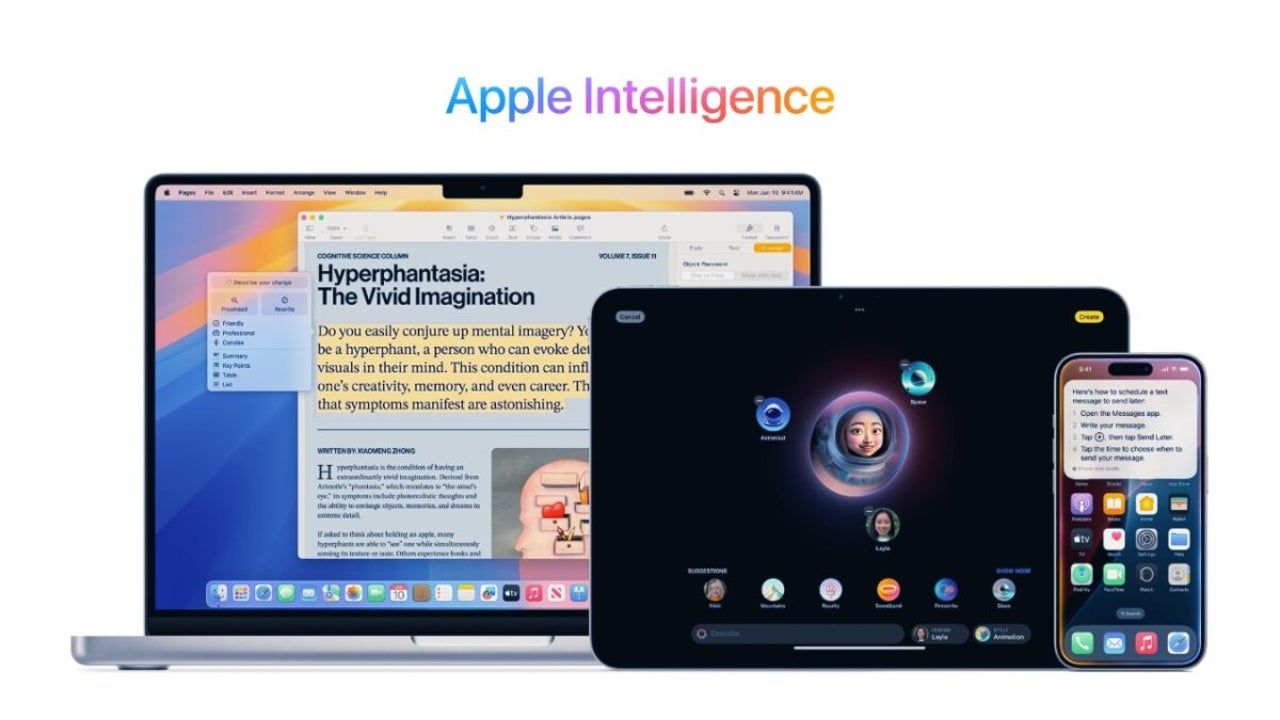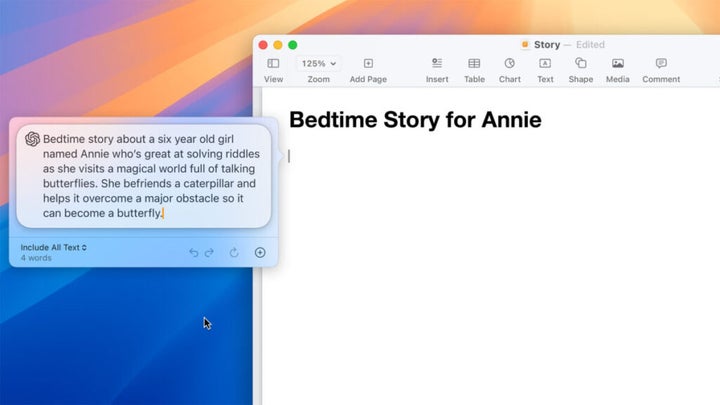Where does Apple’s artificial intelligence come from?
Is it really so different from all the other generative models?

- July 15, 2024
- Updated: July 1, 2025 at 11:11 PM

During the 2024 Worldwide Developers Conference, Apple announced the arrival of Apple Intelligence, artificial-intelligence technology that is integrated into iOS 18, iPad 18, and macOS Sequoia.
For Apple, this is a big step. The rise of artificial intelligence has generated as much excitement as controversy due to how the technology works. In Apple’s case, privacy has been (and continues to be) one of its most critical points. Apple is known for being a strong advocate for the privacy of its users, but how does this reflect within Apple Intelligence?
When we talk about privacy, first we have to understand how large, generative models like OpenAI’s GPT work. To summarize it in a few words, these models are trained using large databases and all kinds of information. Thanks to this extensive preparation, ChatGPT (which uses GPT) is able to understand and generate text using natural language.

However, many times it is unknown where this data comes from or how it has been obtained. In light of this challenge, Apple has tried to be as clear as possible when discussing Apple Intelligence. According to the company, “We train our basic models with licensed data, including selected data to improve specific functions, as well as public data collected by our web crawler, AppleBot“.
However, Apple’s use of public Internet doesn’t differ much from their competition. Other issues come into play, such as copyright and the legitimate use of data. The company Getty Images sued Stability AI for training their AI with images from the site without prior permission. But this is not just a matter for big companies. The creative sector has been the most opposed to these practices, due to the economic benefit that big-tech companies are obtaining through the use of their work.
What is Apple’s position on this? According to the company, they do not use users’ personal data or their interactions to train their AI models. Apple Intelligence harnesses the processing power of the iPhone along with Private Cloud Compute to avoid using such data. While this is a significant step in the fight for user privacy, it remains to be seen if we’ll see a technology that protects the rights of creators in the future.
Artist by vocation and technology lover. I have liked to tinker with all kinds of gadgets for as long as I can remember.
Latest from María López
- Adobe Premiere Pro: Using Generative Extend to create custom ambient audio and room tone
- One-Touch Landscapes: Enhancing Skies, Subjects, and Backgrounds with Scene Enhance on Mobile
- The 15-Minute Project Setup: Building and Using Custom Project Templates in Premiere Pro
- Revolutionize Your PDFs with Adobe Acrobat Studio’s Smart Features
You may also like
 News
NewsBorderlands 4 hasn't had it easy, but it plans to add a feature that should have already been included
Read more
 News
NewsThe new update of The Binding of Isaac is what fans have been waiting for so long
Read more
 News
NewsCybercriminals exploit remote access tools to compromise security
Read more
 News
NewsThere's not much left until we can see the new series from the creator of Money Heist that's going to be a hit
Read more
 News
NewsClaire Danes and Matthew Rhys star in the dark Netflix thriller for which we can already see the trailer
Read more
 News
NewsOnline reputation management: the key to executive success in a digital world
Read more